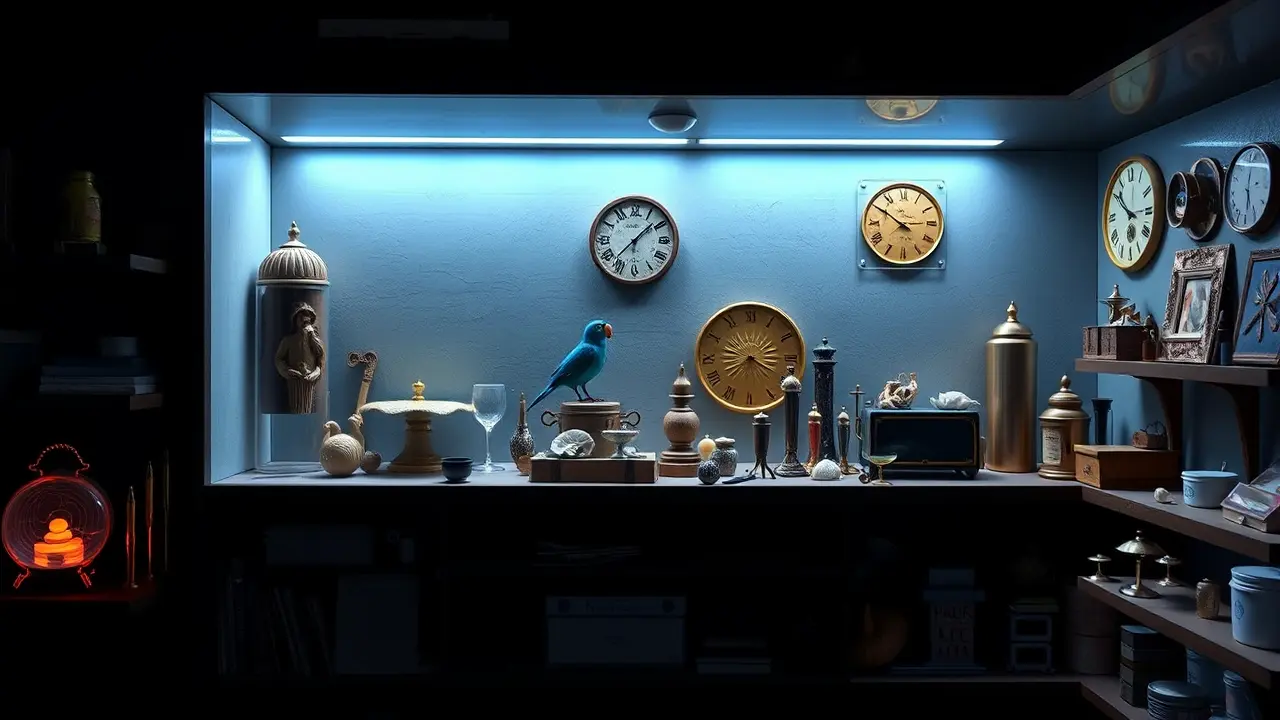
Entertainmenttheatre & artsArt Exhibitions
Wes Anderson Recreates Joseph Cornell's Paris Workshop.
AM
Amanda Lewis
8 hours ago7 min read
In a move that feels less like a traditional exhibition and more like a cinematic séance, Wes Anderson has meticulously resurrected the ghost of Joseph Cornell’s Parisian atelier within the hallowed, white-cube confines of the Gagosian gallery, an act of curation that blurs the line between obsessive fandom and high art. For those familiar with Anderson’s filmography—a universe of fastidiously arranged dioramas, symmetrical frames, and melancholic eccentrics—this endeavor is not so much a departure as it is a homecoming, a pilgrimage to the very source of his aesthetic DNA.Joseph Cornell, the reclusive American surrealist who never set foot in France yet built intricate shadow boxes teeming with European nostalgia, finds his spirit channeled through the modern cinema’s most fastidious world-builder. Walking through the exhibition is to step inside a mind, or perhaps two minds converging; one sees Cornell’s original ‘hotel boxes’ and ‘penny arcade’ constructions, those small, glass-fronted universes containing weathered maps, celestial charts, parrots, and clay pipes, displayed not as sterile artifacts but as living, breathing artifacts of a singular imagination.Anderson, functioning as both archivist and auteur, has not merely hung the works on a wall. He has reconstructed the chaotic, wonder-filled clutter of Cornell’s Utopia Parkway workshop on Long Island, transposing it to the Rue de Ponthieu—shelves groan under the weight of old French newspapers, glass jars filled with watch parts and seashells, and stacks of vintage film reels, all arranged with the director’s signature, almost unnerving precision.This is where Anderson’s genius shines; he understands that Cornell’s magic wasn’t just in the objects themselves, but in their curation, their juxtaposition, the stories implied by a ballet slipper placed beside a wine glass and a chart of the constellations. The exhibition, therefore, becomes a meta-narrative on influence itself, a dialogue across decades between two masters of miniature worlds.One can easily draw a direct line from Cornell’s ‘Medici Slot Machine’ to the elaborate cross-sections of The Grand Budapest Hotel, or from his celestial navigation boxes to the meticulously crafted props aboard the train in The Darjeeling Limited. Art critics and historians present at the opening have noted the profound intimacy of the display; it feels less like a public viewing and more like being granted privileged access to a wizard’s workshop, a sentiment echoed by Dr.Élise Moreau, a surrealism scholar from the Sorbonne, who remarked, 'Anderson hasn’t just mounted an exhibition; he has performed an act of artistic empathy. He demonstrates that Cornell’s work was never static sculpture, but a form of cinema in a box, a frozen narrative waiting for a viewer to project a story onto its contents.' The broader context here is the escalating trend of filmmakers crossing into the gallery space, with names like Steve McQueen and Pedro Almodóvar previously staging installations, yet Anderson’s approach is uniquely reverent and deeply personal. The consequences of this for the art market are significant, potentially driving a renewed and fervent interest in Cornell’s oeuvre, whose pieces already command seven figures at auction, while simultaneously elevating Anderson’s status from mere collector and fan to a legitimate and serious force in the art historical conversation. The Gagosian show, in the end, is more than a collection of objects; it is a thesis on loneliness, memory, and the universal human urge to build small, perfect worlds when the larger one proves too unwieldy, a theme that resonates from Cornell’s Queens basement to Anderson’s soundstages, and now, to a hushed gallery in Paris where two distinct artistic visions have finally, and beautifully, collided.
#Wes Anderson
#Joseph Cornell
#Gagosian Paris
#art exhibition
#surrealism
#featured
Stay Informed. Act Smarter.
Get weekly highlights, major headlines, and expert insights — then put your knowledge to work in our live prediction markets.
© 2025 Outpoll Service LTD. All rights reserved.